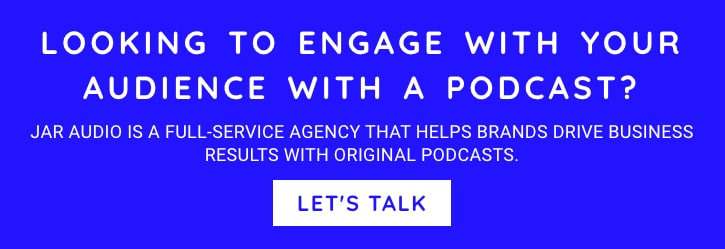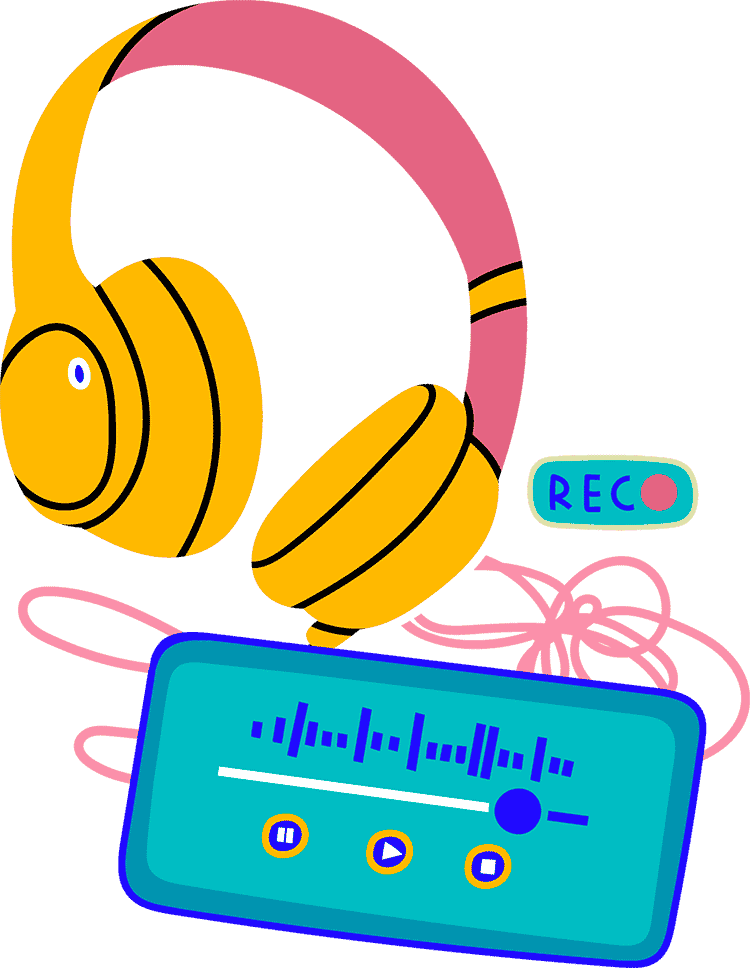Let’s get something straight: if you’re still using downloads as your north star for podcast performance, you’re flying blind.
And not cool Top Gun blind. More like driving-in-a-snowstorm-with-no-wipers blind.
Podcast attribution is messy, slow, and full of blind spots. But that doesn’t mean it’s impossible. And if you’re a content marketer fighting to justify your budget, getting this right could mean the difference between next year’s renewal — and next year’s regret.
This post is your flashlight. Let’s cut through the fog.
Why Podcast Attribution Feels Impossible
Let’s call it: podcast analytics are stuck in the stone age compared to web or paid media.
Here’s why:
- Off-platform. You can’t drop a pixel on someone streaming from Apple Podcasts. You’re getting scraps from the analytics table.
- Low-click. Joggers, commuters, dog-walkers — your listeners aren’t smashing CTA buttons mid-episode. And you’re not popping up on their screen like a display ad.
- Spread out. Your show is on Spotify, Apple, YouTube, Google, embedded on your blog, played through smart speakers — good luck centralizing the data.
- Shared. Headphones aren’t always part of the picture. Podcasts are social. Speakers at home, coworkers in the car, friends on a hike. It’s not one device = one listener.
- Delayed. Podcast impact is rarely instant. People listen passively, recall your brand days later, Google you weeks later, and fill out a form sometime next quarter.
That lag — and the fragmentation — makes it hard to stitch together a clean customer journey.
Worse: most of that journey happens in dark social. Direct messages. Watercooler convos. Screenshots in Slack. None of it’s trackable. All of it drives impact.
Still, just because you can’t see everything doesn’t mean you can’t see enough to make smart decisions.
Ditch the Downloads: What to Track Instead
Let’s be blunt: downloads are 2005’s pageviews. Better than nothing. But barely.
Here’s what actually helps prove ROI:
1. Branded Search Lift
When someone listens, remembers, and then types your brand name into Google, that’s a real signal. You can’t fake intent like that.
Use tools like Google Search Console or SEMrush to track branded keyword spikes after episode drops. Look for trends, not just one-off blips.
Bonus move: compare branded search lift between episodes. Find out which topics or guests generate curiosity.
2. Website Traffic from UTM Links
Trackable URLs are your lifeline. Every episode should include UTM-tagged links in:
- Show notes
- YouTube descriptions
- Guest bios
- Spoken CTAs (via easy-to-remember vanity links)
Tools like CoHost, Podfollow, and Plink make managing these easier. Just make sure your links are short, human-friendly, and consistent.
3. Lead Quality
Quantity’s fine. But quality is ROI’s best friend.
By integrating your CRM (HubSpot, Salesforce, whatever) with UTM parameters, you can trace demo requests, trials, or whitepaper downloads back to podcast referrals.
Pro tip: Track lead-to-close rates by source. If podcast leads are converting faster or closing bigger, you’ve got your proof.
4. Engagement Drop-off
Completion rates are gold. They tell you what’s working and what’s wasting your audience’s time.
Use Spotify and Apple’s analytics dashboards to spot:
- Common drop-off points
- Differences between episode types
- Engagement by region or device
Then optimize. Ruthlessly.
5. First-Party Data
“How did you hear about us?” is still king.
Include the question in:
- Contact forms
- Newsletter signups
- Demo request flows
- Post-sale surveys
Don’t settle for multiple choice. Leave a free text box. You’d be amazed how often people write “your podcast.”
6. Social Signals
Podcasts spark conversation. Track it.
- Set up alerts for episode titles, branded hashtags, and guest mentions.
- Use tools like Brand24, Meltwater, or SparkToro to monitor where and how your podcast is being talked about.
These aren’t vanity metrics. They’re indicators of reach, resonance, and — yes — real influence.
Multi-Touch Attribution: Your New Best Friend
Here’s the dirty secret: no one hears a podcast and immediately buys a $100k software license.
That’s not the job.
The job is trust. Familiarity. Affinity. And your analytics need to reflect that.
That’s why multi-touch attribution matters. It doesn’t give podcasts all the credit. Just the right amount.
Some models to explore:
- U-shaped: Gives 40% credit to the first and last touch, 20% spread in between. Branded podcasts often show up first.
- Time decay: The closer the touchpoint to the conversion, the more weight it gets.
- Algorithmic: Uses machine learning to assign value based on historical performance patterns.
Real brands who do this well:
- HubSpot: Pipes podcast promotion data into Salesforce and attributes podcast plays as a first touch in U-shaped models.
- Shopify: Weights recent touches more heavily using time-decay modeling via Segment.
- Squarespace: Runs podcast campaigns through Podsights to get smarter with ad and content spend.
Use what fits. But use something. Flying attribution-blind will get you grounded real fast.
First-Party Data: The Attribution Workhorse
If you can’t plug into Apple’s brain, you build your own.
Here’s what we use:
- Lead Forms: Always ask where they heard about you.
- Promo Codes: Especially for B2C. Make them episode-specific if you can.
- Surveys: Use tools like Typeform or SurveyMonkey, and incentivize responses with merch, discounts, or behind-the-scenes content.
Make sure you store and tag this data in your CRM. If it lives in someone’s inbox or a rogue spreadsheet, it’s useless.
Platforms like Claritas and Podsights integrate with HubSpot and Salesforce to automate this stuff. Zapier can be your glue.
Podcast SEO: The Attribution Power Move
Most brands sleep on podcast SEO. That’s dumb.
If you want to be found and tracked, do this:
- Keyword-Optimized Titles: Skip the puns. Write for humans (first) and search engines (second).
- Smart Show Notes: Add internal links, UTM-tracked links, and guest bios. Treat them like mini blog posts.
- Transcripts: Google can’t “listen.” But it can read. Drop the transcript below each episode on your site.
- Dedicated Episode Pages: Build landing pages that feature the episode, related CTAs, retargeting pixels, and content upgrades.
Using Analytics to Generate Actual Leads
Let’s get real: You’re not tracking this stuff just to feel smart. You’re doing it to fill the pipeline.
Here’s how podcast attribution helps you do that:
- B2B Listener Data: Tools like CoHost can tell you which companies are listening, even if you don’t know who. Pass that info to your sales team, and have them reach out to the right contacts in their CRM.
- Traffic Flow: Which episodes are pushing people to demo pages, guides, or contact forms?
- Lead Nurture: Build email sequences that reference specific episodes. Example: “Liked our episode on security hygiene? Here’s a playbook we made.”
Here are examples from the wild:
- Gong: Uses episode listening behavior to personalize sales outreach. If someone listens to an AI-themed ep? They get sent the AI playbook through a CTA, and their details are captured.
JAR Audio’s Podcast Attribution Playbook
We don’t worship downloads. We worship performance.
Here’s our recipe:
- Track Links: Platform-specific. Always tagged. Always monitored.
- Monitor Listener Behavior: Completion rates, drop-offs, binge patterns — we track them all.
- Collect First-Party Data: Surveys, promo codes, in-form questions. We close the loop.
- Rely on Smart Budgeting: If a show format is outperforming, we push harder. If it flops, we pivot.
Looking for Proof?
- Amazon’s “This Is Small Business”: We helped Amazon restructure topics and CTAs based on search lift and listener behavior.
- Allianz Trade’s “Wheel of Risk”: We dropped low-performing formats and doubled down on the episodes that drove branded search lift.
Want more? Read our case studies right here.
Looking Ahead: Podcast Attribution Is Growing Up
This space isn’t standing still. Watch for:
- AI-powered Attribution Models: Behavioral predictions, smarter touchpoint weighting, listener identification — all in real time.
- Blockchain Analytics: More transparency in who heard what, when, and for how long.
- Wallet-based Listening: In a Web3 world, listeners might grant brands access to their data directly. It’s podcast attribution without surveillance.
Final Thoughts: Action, Not Excuses
Podcast attribution will never be perfect.
But it needs to be:
- Clear enough to justify budget
- Accurate enough to shape strategy
- Consistent enough to drive action
If you’re still guessing, you’re bleeding cash.
At JAR Audio, we don’t just make podcasts. We make podcasts that prove their worth. And if you’re serious about showing results? Let’s talk.
Roger transitioned from a 22 year career in advertising account management to co-founding JAR, a podcast podcast production agency. As CEO of JAR, he propels the company’s growth by prioritizing audience engagement and podcast marketing. Under his guidance, JAR flourishes with a global clientele, aiming to broaden its reach across North America and revolutionize brand connections through immersive storytelling.



